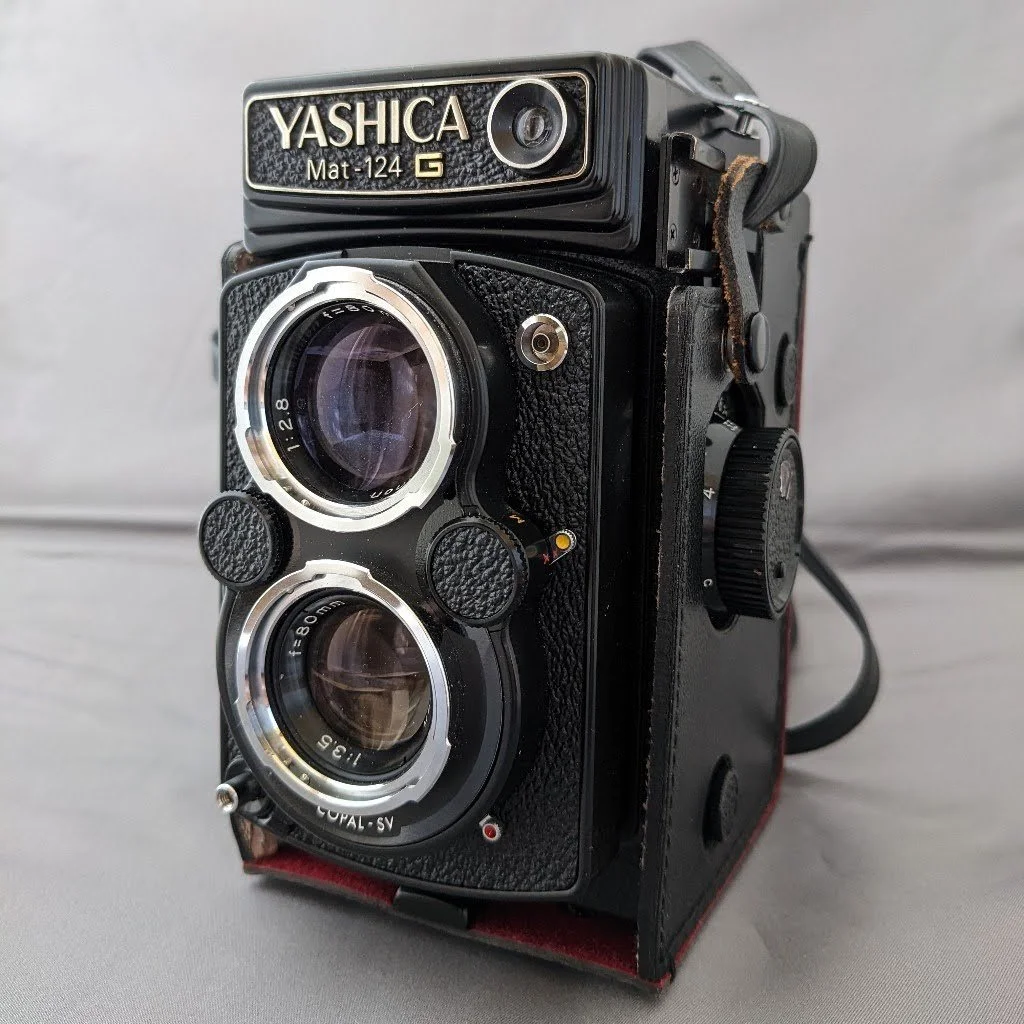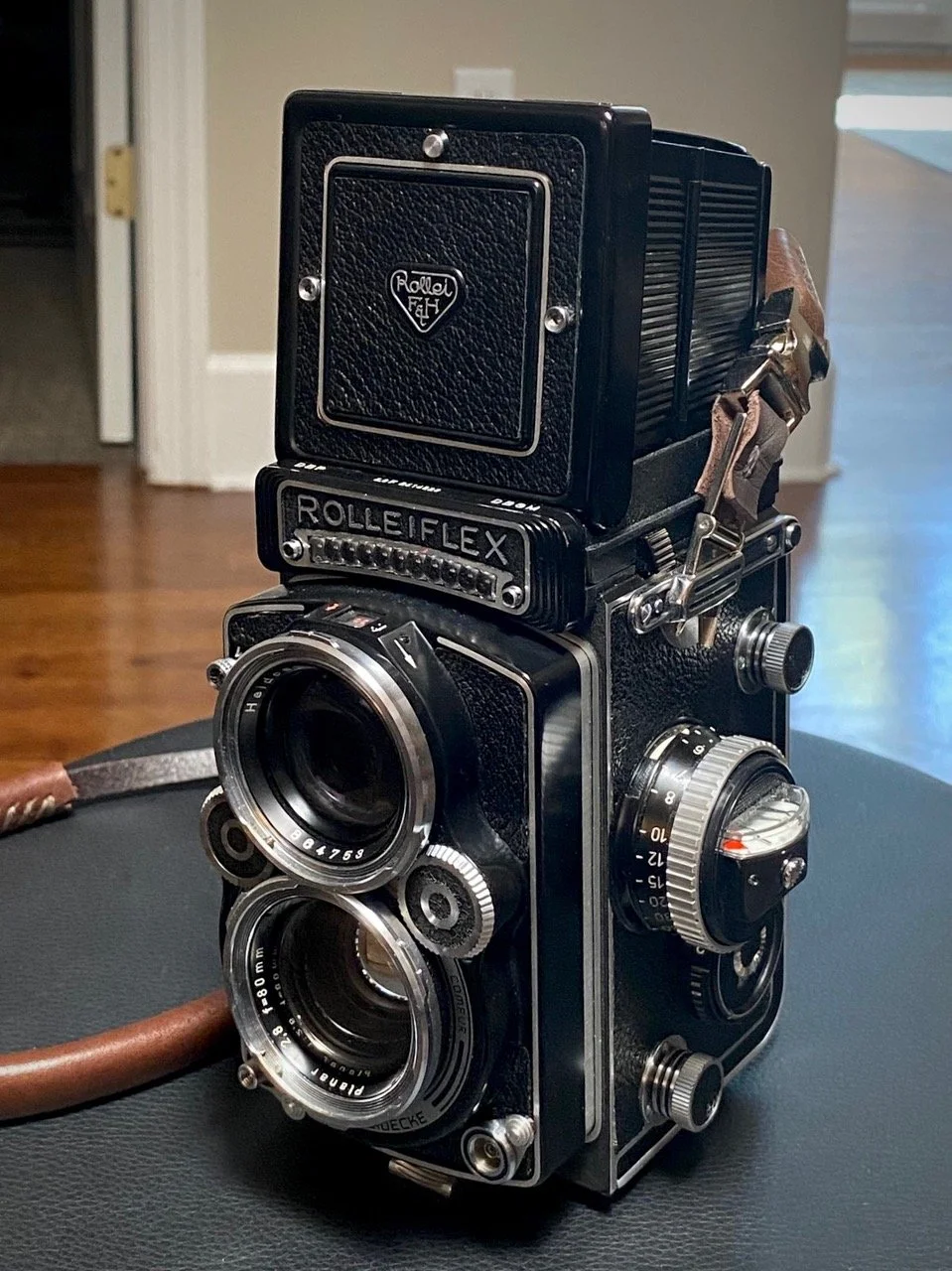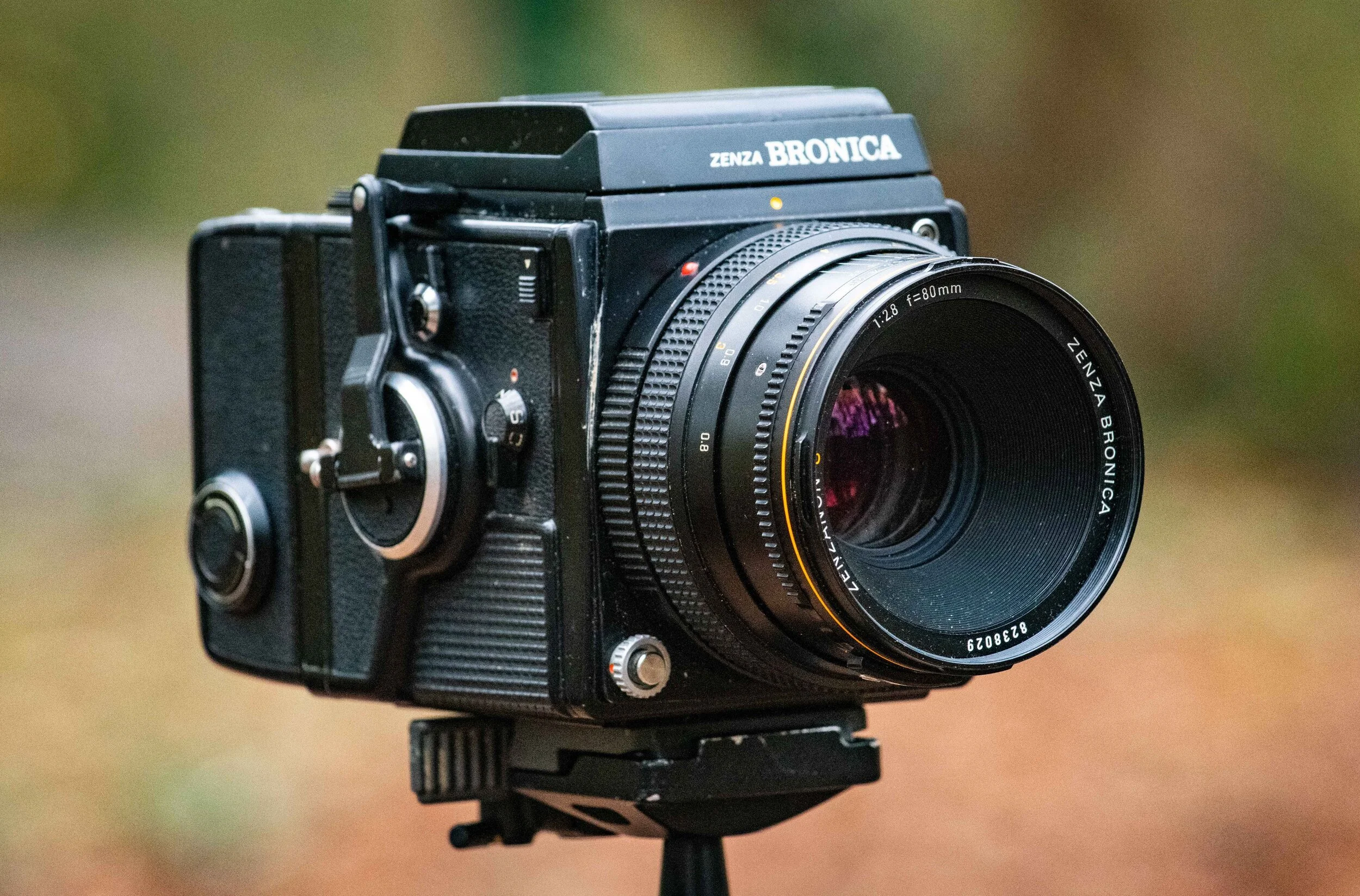6 Best Square Film Cameras of 2024
Square medium format cameras, which typically use 120 film to produce a 6x6 cm image, have been around since the early 20th century. This film format eliminated the need to rotate the camera for portrait or landscape orientation, making it very versatile for different types of photography, including portrait, landscape, and street photography. This format has been utilized by numerous other camera manufacturers over the decades, including Hasselblad, Mamiya, and Yashica cementing itself as a staple in the world of amateur photography alike.
Here we’ll go over the six best square film cameras available in 2024, detailing their specifications, pros and cons, key features, build and design, and price points including options for budget conscious photographers. Keep in mind these are just a few of the many many excellent square cameras available on the market but if you’re looking for a great starting point, look no further!
Hasselblad 500CM Classic
Price Point: Typically these medium format film cameras are in the higher range: an investment at around $1,500 for a good used condition set.
Specifications: This model offers a 6x6 cm square format with manual focus capabilities and interchangeable lenses, typically found with a 80mm f/2.8 standard lens. Ideal for versatile and high resolution medium format film shots.
Key Features: The Hasselblad 500CM is renowned for its exceptional image quality and mechanical reliability. It features a modular system allowing for easy customization and maintenance.
Build & Design: Sporting a robust metal body, the Hasselblad 500CM has a timeless, classic aesthetic. Its design is both functional and elegant, appealing to professional photographers and enthusiasts from a practical and an aesthetic standpoint.
Pros: Superior build quality, exceptional image detail, and a modular system that's highly versatile.
Cons: It lacks automation features like auto focus or metering, which might challenge beginners. Also could be considered a bulky medium format film camera for those not used to the size of these kinds of cameras.
2. Yashica Mat-124G
Price Point: Approximately $400-$500, making it a great entry-level option.
Specifications: Features a 6x6 format on 120 film, 80mm f/3.5 lens, and a Copal shutter with speeds from 1 to 1/500 sec plus Bulb mode.
Key Features: Twin-lens reflex with a built-in 4-element Yashinon lens and a coupled light meter.
Build & Design: Encased in a rugged, chrome plated metal body, the Yashica Mat-124G is designed for durability and ease of use, featuring a crank for film advance that doubles as a handle.
Pros: Affordable and user-friendly; includes a light meter which is pretty rare for vintage medium format film camera models.
Cons: Fixed lens and somewhat limited shutter speed range which is not ideal for low-light situations without a tripod.
3. Rolleiflex 2.8F
Via Charles McLean
Price Point: The Rolleiflex 2.8F typically ranges between $2,000 and $3,00 for a film camera in good working condition, reflecting its status as both a collector’s item and a high quality photographic tool.
Specifications: The Rolleiflex 2.8F utilizes a 6x6 cm square format on 120 roll film, for 12 exposures per roll. It is equipped with a Zeiss Planar 80mm f/2.8 lens known for its ability to produce sharp, high contrast images even in more difficult lighting conditions. The camera features a Synchro-Compur shutter with speeds ranging from 1 to 1/500 second, and bulb mode, alongside aperture settings from f/2.8 to f/22, offering extensive control over exposure.
Key Features: This medium format film camera includes an integrated ambient light meter which simplifies exposure settings for accurate shots and features a Bayonet III mount, making it compatible with a wide range of Rollei specific accessories such as different viewfinders and lens hoods. It also has a Heidosmat focusing lens on the viewing side, paired with a bright focusing screen, which helps a lot with precise manual focusing.
Build & Design: The Rolleiflex 2.8F features a classic twin lens reflex design with a durable, high-quality leatherette finish that enhances grip and comfort. Its compact and ergonomically balanced structure is ideal for handheld shooting, making it a preferred choice for street and portrait photography.
Pros: The combination of the Zeiss Planar lens and the film camera’s mechanical precision results in consistently sharp and detailed film negatives Known for its durability and reliable operation, which is critical for professional use and in demanding environments, the film camera’s design and integrated light meter also make it relatively straightforward to use after going through an initial learning period.
Cons: With a higher price point, especially for well-preserved units, the Rolleiflex 2.8F represents a significant investment. The camera's fully manual operation and film loading mechanics require some practice, particularly for those accustomed to digital cameras.
4. Mamiya 6 MF
Price Point: Typically found around $1,800 for the body alone, with lenses costing additional, depending on their focal length and condition. This makes it a higher end investment in the realm of medium format photography. From personal experience it’s worth the investment!
Specifications: The Mamiya 6 MF uses a 6x6 cm square format on 120 or 220 film, offering a switchable pressure plate for versatility with both film types. It features a quiet, advanced electronic focal plane shutter with speeds ranging from 4 seconds to 1/500th of a second, including a bulb mode. The film camera supports interchangeable lenses, with focal lengths ranging from 50mm f/4 to 150mm f/4.5, which are praised for their sharpness and lack of distortion.
Key Features: Notable for its collapsible design that makes it exceptionally compact for a medium format camera proving to be great as a travel camera. The Mamiya 6 MF also boasts an accurate, coupled rangefinder system that ensures precise focusing. It is equipped with a multiple exposure capability and an automatic film loading and advance system, which adds to the ease of use for field photography.
Build & Design: The medium format film camera is designed with a focus on ergonomics and minimalism, featuring a durable, lightweight body that is easy to handle and operate. Its modern aesthetics are complemented by practical design choices, such as a straightforward and accessible control layout.
Pros: The Mamiya 6 MF's interchangeable lens system and portability make it highly versatile for various types of photography, from street to landscape. Its electronic shutter provides a broad range of speeds, enhancing its adaptability in different lighting conditions.
Cons: The reliance on electronic components can be a drawback, as battery failure renders many of the camera's functions unusable. Additionally, the camera is relatively expensive, particularly when factoring in the cost of additional lenses.
5. Bronica SQ-Ai
Price Point: The Bronica SQ-Ai is generally available in the range of $600-$900 for the body with a standard lens, offering a competitive price for a professional grade medium format system.
Specifications: The Bronica SQ-Ai operates on 6x6 cm square format 120 or 220 roll film, featuring interchangeable lenses, backs, and viewfinders to suit various shooting scenarios. It comes standard with a Zenzanon-S 80mm f/2.8 lens. The medium format film camera includes an electronically controlled leaf shutter with speeds from 8 seconds to 1/500th of a second and a bulb mode for long exposures.
Key Features: The film camera has TTL metering capabilities, mirror lock-up for reducing camera shake, and the ability to use multiple film backs which can be swapped mid roll without losing film. It also supports fully manual operation or aperture priority automation, giving photographers flexibility depending on their comfort level in any given situation.
Build & Design: The SQ-Ai is built with a durable, all metal body and designed to handle the demands of professional use. Its modular nature allows for extensive customization, which can be tailored to specific photographic needs, making it a preferred choice for studio and fieldwork.
Pros: The modular design of the Bronica SQ-Ai allows for significant flexibility and expansion, making it suitable for a wide range of photographic tasks. Its robust construction ensures durability and reliable performance under various conditions.
Cons: The system's complexity and weight can be challenging for casual users or those new to medium format. Additionally, being a fully mechanical system, it requires a thorough understanding of photo techniques to maximize its potential.
6. Mamiya C330 Professional
Price Point: Typically found in the range of $300-$500 depending on condition and the lenses included, making it an affordable medium format film camera option.
Specifications: The Mamiya C330 features a 6x6 cm square format on 120 film, offering 12 exposures per roll. It includes interchangeable lenses ranging from wide angle to telephoto, with the standard being an 80mm f/2.8 lens. It also features a bellows focusing system that allows for close up photography without special accessories.
Key Features: This camera stands out with its ability to change lenses, a rare feature for TLR cameras. It is great for macro photography thanks to its bellows system, and it's equipped with a double exposure capability. The Mamiya C330 also uses a sturdy leaf shutter with speeds from 1 to 1/500th second and includes a bulb mode.
Build & Design: The Mamiya C330 has a rugged, all-metal body designed to withstand extensive use. It's slightly heavier than some contemporary models, which, while adding to its durability, also ensures stability when shooting handheld. The camera’s design makes for an easy grip and operation, even when changing lenses or using the bellows focusing system.
Pros: Its interchangeable lens system and macro capability make the Mamiya C330 highly versatile for studio and field photography. The camera is also known for its mechanical reliability and ability to produce high quality images consistently.
Cons: Its heavier build makes it less ideal for casual use or for photographers who prefer lighter gear. Additionally, it lacks an in built light meter, requiring photographers to use an external meter or estimate exposures.
If you enjoyed this article please be sure to visit nicefilmclub.com for all your film development and scanning needs!






